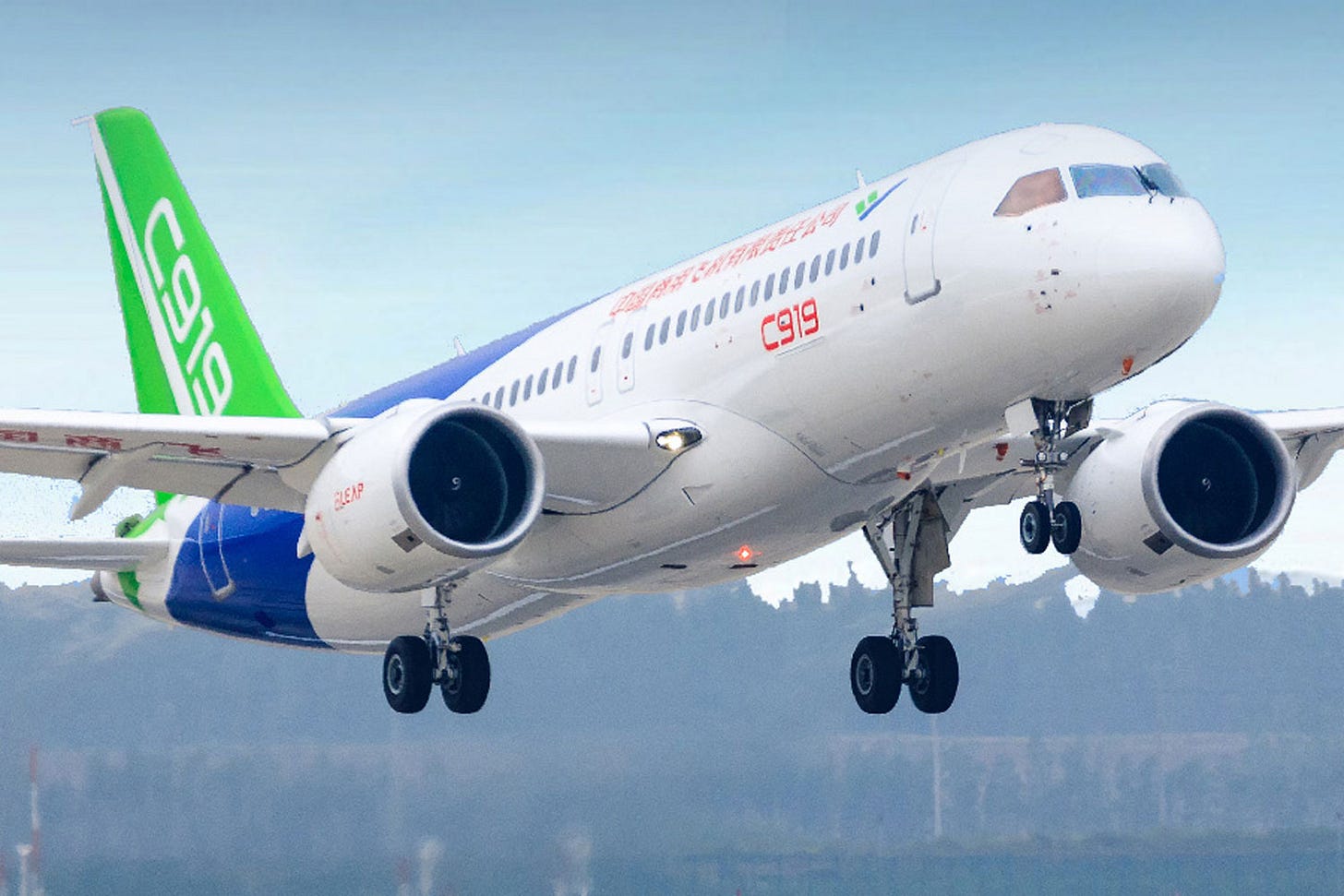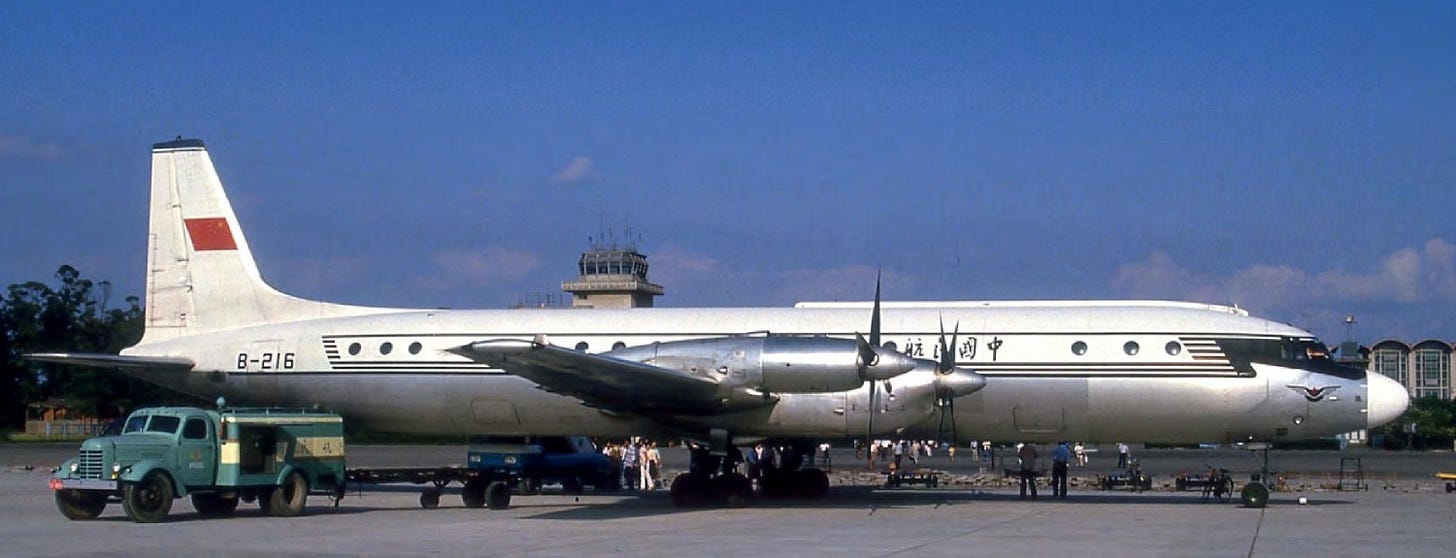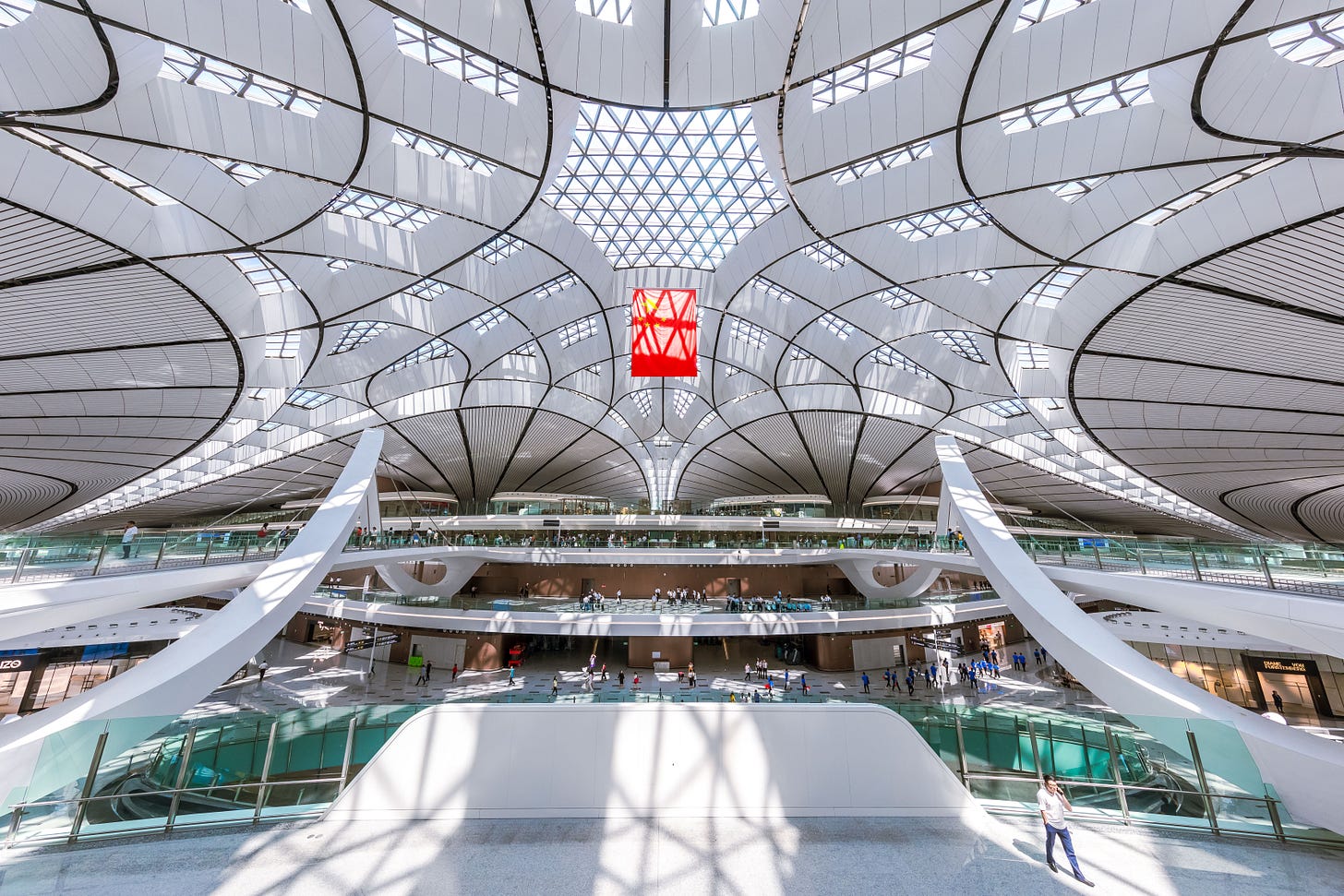In 1986 I spent two months visiting mainland China.
I never could have imagined then that some 35 years later the country would have built more than 240 modern airports as well as it’s first homegrown COMAC C919 airplane that just took flight last week.
In 1986, independent travel on the mainland was difficult and getting a seat on an airplane was nearly impossible. You had to line up at the air travel office, hope for an open seat, and then be denied day after day. Maybe even weeks. After days of lining up, I was lucky to get a ticket for only internal flight I took, Shanghai to Kunming.
That plane trip was eye-opening.
I boarded an old Soviet made propeller plane by a rickety stair case.
The seats seemed to have been recently bolted into the floor, poor air circulation, no meal service, no rules about what you could bring on board, and certainly no rules on having to remain seated. Like train travel back then, you could bring most anything on board. All sorts of food, wrapped parcels of specially items from your province, and even large burlap bags wrapped in twine blocked the aisles.
Embarking and disembarking was a free for all similar to getting on trains back then.
There was only one airline back then, CAAC Airlines 中国民航, formerly the People's Aviation Company of China 中國人民航空公司.
Much of the fleet consisted of Soviet propeller planes with only a handful of Boeings and some British made planes acquired for international flights.
The airplane I boarded looked like the one below.
Two years after my flight, in 1988, CAAC Airlines split into six separate airlines, each named after the geographic region of their main operating areas:
Air China, the flag carrier, based in Beijing, inherited the IATA and ICAO airline code of CAAC
China Southwest Airlines, based in Chengdu (merged into Air China in 2002)
China Eastern Airlines, based in Shanghai
China Northwest Airlines, based in Xi'an (merged into China Eastern in 2002)
China Southern Airlines, based in Guangzhou
China Northern Airlines, based in Shenyang (merged into China Southern in 2003)
These later consolidated into China's Big Three airlines: Beijing-based Air China, Guangzhou-based China Southern Airlines, and Shanghai-based China Eastern Airlines.
Flash forward to today.
On May 27, 2023 China’s first domestically produced passenger plane the Comac C919 made its first flight - from Shanghai to Beijing with 120 specially invited passengers.
COMAC = Commercial Aircraft Corporation of China
Showing full trust in the new plane, the passengers on the first flight of C919 included:
Minister of Industry & Info Tech of China; Director of the Civil Aviation Administration of China; Chairman of COMAC; General Manager of China Eastern Airlines; Chief Designer of C919; General Manager of AVIC.
China Eastern Airline regular scheduled service between Shanghai and Chengdu began on May 29. According to Xinhua news, the airline plans to acquire 4 more of the planes over the next two years.
According to Aviation Week Network’s Fleet Discovery, 697 C919s are on order, mostly by Chinese airlines and China-based or owned lessors. That’s almost 700 new aircraft scheduled for manufacture.
Yet another step in China reshaping the global economy by competing away the West’s dominance in production of exports. Just like they have done with TVs, phones, computers, cars, trains, and now planes.
We have entered a new era in Chinese manufacturing.
As with the beginnings of developing the train networks, there were many naysayers and doubters, so too now with the beginnings of airplane manufacturing.
The infrastructure is already in place with more than 240 modern airports with the aim to have 400 airports by the end of 2035.
There are now regional airlines that link the larger cities with smaller cities.
According to ACI World Airport Traffic Forecasts published in January 2021, China is expected to become the largest passenger market in 2031, overtaking the United States. In 2040, ACI predicts that China will dominate passenger rankings with just over 3.6 billion passengers, equivalent to an 18.3% share of the global passenger traffic market, and well ahead of an expected 2.9 billion passengers for the United States.
The architecture and planning make the airports in China some of the most modern airports in the world.
There are easy-to-reach public bus and rail links from the airport to the city.
With the Comac C919 there is a homegrown alternative to the Boeing/Airbus.
Now every time I land in a new airport in China, I think back to the days of difficult air travel in 1986. In 35 years it has taken a focused and organized plan mixed with hard work and dedication to bring the airline industry up to the world’s most modern standards.
I have no doubt that China will exceed expectations.
Read Aviation Week article on the first flight HERE
Read about the CJ-1000A engine HERE
Read Aerotime Hub article HERE






